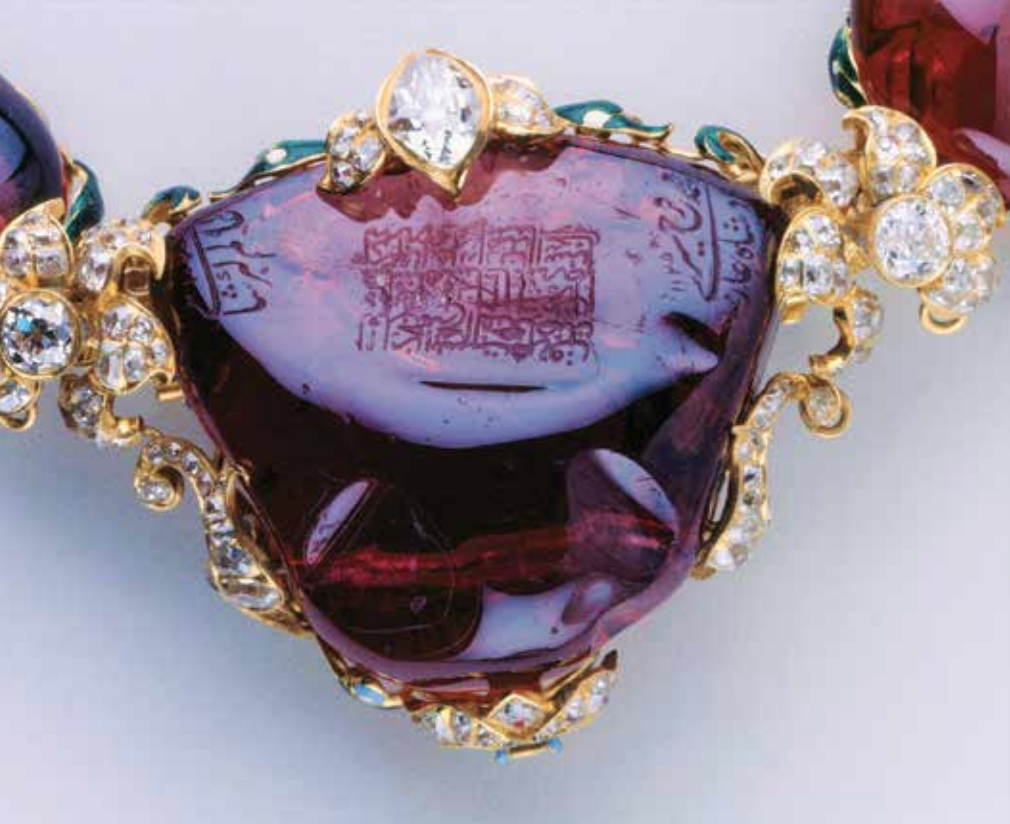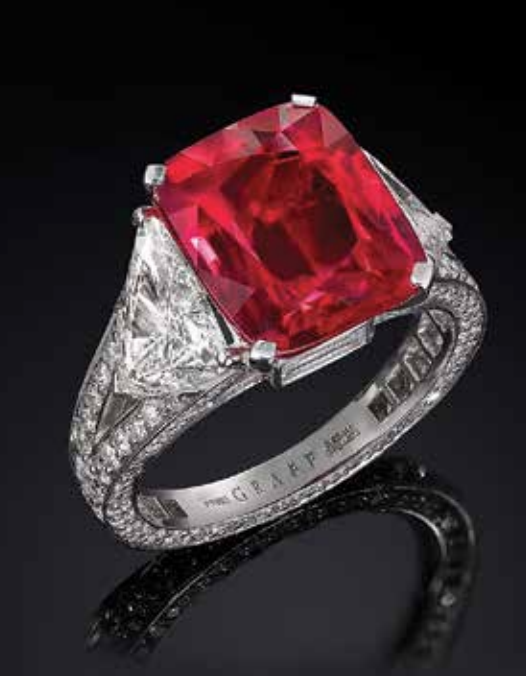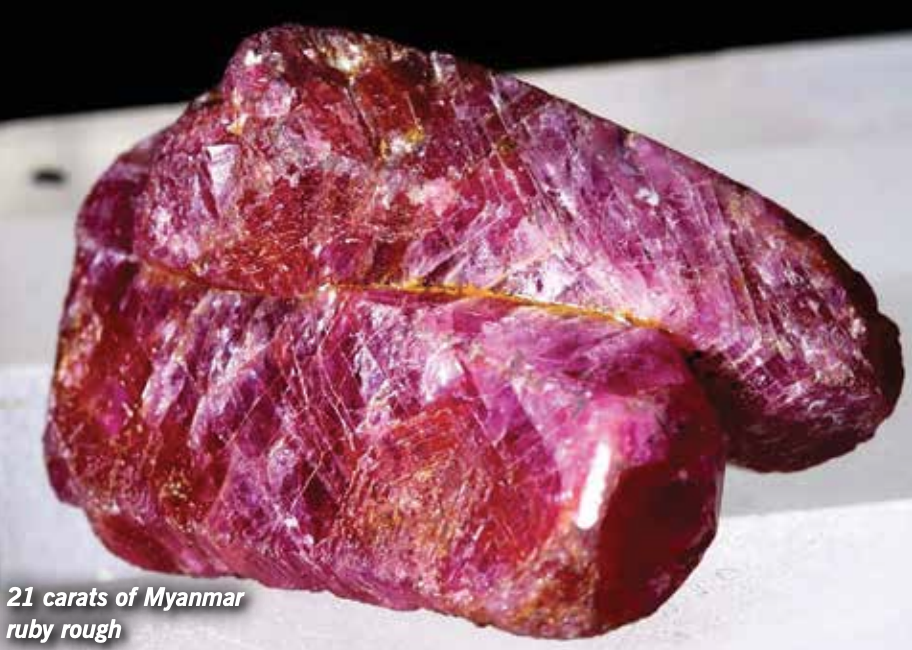Rubies are really a girl’s best friend
According to folklore, fine rubies serve to preserve and restore the health and spirit of the owner. Some Myanmar people still believe that to benefit from the full power of the gem, it should be worn inside the flesh to integrate with the body. Apparently, to wear a ruby in such a fashion is sufficient to protect the person from attack by spears and swords. Bullets don’t get a mention. So, what exactly is a ruby, where do they get their colour from, and are they more “powerful” than diamonds? Rubies and sapphires are basically the same mineral, corundum, which is a chemical composition of aluminium and oxygen. Pure corundum has no colour, but such gems are very rare. The characteristic colours of red for rubies and blue for sapphires, are caused by impurities of a metallic oxide called chromium. Other common colours for corundum include brown, yellow, green and violet. Probably the rarest gemstone, after clear corundum, is one tinged with orange. In modern times, diamonds are generally believed to be the most esteemed and valuable of all gemstones. This in no small part is due to very intense and clever marketing strategies by corporations such as De Beers, which has a hand in everything from diamond mining and diamond retailing to diamond trading and industrial diamond manufacturing. There’s a saying that the greatest trick the devil ever played was convincing the world that he didn’t exist. Well perhaps the greatest trick ever played in the diamond game is convincing people that they are rare.
Just like the Black Prince’s Ruby, the Timur Ruby is actually a spinel. The name of the stone comes from Timur (Tamerlane 1336-1405), the founder and namesake of the Timurid Empire in central Asia. The irregularly-shaped cabochon spinel weighs an impressive 361 carats. The stone is etched with the names of five of the men who owned it: Jahangir (1569-1627), the 4th Mughal Emperor; Shah Jahan (1592-1666), the 5th Mughal Emperor; Farrukhsiyar (1685-1719), the 10th Mughal Emperor; Nader Shah (1688-1747), Shah of Iran; and Ahmad Shah Durrani (1722-1772), King of Afghanistan. Jahangir also had the name of his father, Akbar the Great, engraved on the spinel.
For hundreds of years the famous “Black Prince’s Ruby” set in Britain’s Imperial State Crown, was regarded as the world’s largest ruby at 170 carats, however it is really a spinel. The ‘Timur Ruby’, of 361 carats, is the centrepiece of a necklace that is also in the crown jewels and it too has been classified as a spinel. Spinels are valuable gemstones but carat for carat they are not in the same league as rubies of the same size. They were only recognised as an individual mineral some 180 years ago. Spinels may occur in colours of red, pink, violet, yellow, orange, blue, dark green or black and are mined in some of the same places as rubies. The chemical composition is different from that of rubies, consisting of magnesium and aluminium oxide. The world’s major ruby mines are in Myanmar, (formerly Burma), Sri Lanka, (formerly Ceylon) and Thailand (formerly Siam). Gemstones from the different regions may have a characteristic colour although this is not a very precise way of tracking down the origin. Thai rubies are a violet shade of red, called ‘Thai red’, while gems from Sri Lanka, or Singhalese rubies, are slightly pinker in colour. These are described as “rose red” or “Ceylon red” by knowledgeable traders. The most prolific and valuable ruby deposits are in Myanmar, to the north of Thailand. The finest Myanmar rubies are called “pigeon’s blood” with the red in the middle of the red spectrum. If you see a blackish or bluish tinge to the stone, you could be looking at top quality. Rubies with a pink tinge may look pretty but are considered of lesser quality. The most famous ruby fields in the world are near a town called Mogok, which is situated in a deep valley in northern Myanmar. To get there, first fly to the capital of Yangon (Rangoon). Next, it’s a plane or train journey to the ancient capital of Mandalay. The train trip is an adventure in itself. About 200 kilometres northeast of Mandalay is your final destination, the town of Mogok, which is sometimes accessible by road but otherwise, it’s a helicopter trip.
Nobody knows when the Mogok ruby mines were first discovered, although it is known that the mines date back several hundred years. It seems possible that these mines were worked more than a thousand years ago, since this region of Asia was settled first. Many fine rubies mined in Mogok grace the golden spires of the countless pagodas throughout Myanmar, icons of the Buddhist faith, which attracts some 80 per cent of the Myanmar people. Early rubies were cut as cabochons because of the difficult cutting techniques required to facet such a hard stone.
This 8.62 carat ruby was bought at auction in 2014 by London luxury jeweller, Laurence Graff. He paid US$8.6 million at the time. Regarded by many as the finest ruby in the world and named the Graff Ruby, it comes from Mogok in Myanmar. At the same auction a 27.54-carat Kashmir sapphire sold for a record $US6.78 million
The entire country of Upper Burma was annexed by the British in 1886 and part of the British plan was to prevent the ruby mines from falling under French control. Before long, a company calling itself British Ruby Mines Limited, was floated. This new enterprise leased the mines around Mogok from the British administration for an annual fee plus a share of the profits. Initially, mining was done by primitive native methods consisting of driving narrow shafts down through the soggy earth until the ‘byon’ was reached (‘byon’ is the alluvial gravel where rubies are found). These vertical shafts were between six and ten metres deep. The mining company sought to increase profits for the shareholders by introducing advanced, alluvial mining techniques as mechanical extraction tended to crush the precious crystals. One major problem was that much of the ruby-bearing ore was underneath the town of Mogok. The buildings had to be purchased, demolished and rebuilt away from the ore body. Perhaps the biggest problem faced by the new miners was the very nature of the territory. Although only 200 kilometres from the then capital of Mandalay, the dense jungle was the source of tropical fever and home to dangerous wildlife such as tigers and snakes. The mule track from Mandalay to Mogok valley also had to cross a mountain range more than 1,300 metres high. Heavy pieces of mining equipment could only be hauled during the dry season, and the difficult journey sometimes took weeks.
Despite all these setbacks the stoical British, willingly supported by their Burmese subjects, constructed a power station, drainage tunnels and washing mills for separating the precious stones from the soggy dirt. The company prospered until early last century when the technique for synthesising rubies was discovered. Rubies became hard to sell and the price fell accordingly. Before long, the American ruby market collapsed as a result of the Great Depression. The Burma Ruby Company struggled on for years before finally handing back its mining lease to the British administration in 1931. Native miners continued to mine gems until the Mogok ruby fields turned into a battlefield for the invading Japanese army and the 14th British Army. Since World War II, Burma has been caught up in some bizarre political and social events. Governments come and go. Leaders are drawn from the military regime as was the case last year when the democratically elected leader, Aung San Suu Kyi, was ousted in a military coup led by Senior General Min Aung Hlaing. However, one thing is certain, while it’s a no-go zone at the moment, Myanmar will one day again entice affluent travellers from around the world. And rubies, the world’s most sought-after gemstones, are still mined at Mogok.
But why are they so expensive, you ask? Ruby-bearing earth is very difficult to detect geologically. They generally occur in areas of contact metamorphism and few deposits have been discovered in the last thousand years or so.


